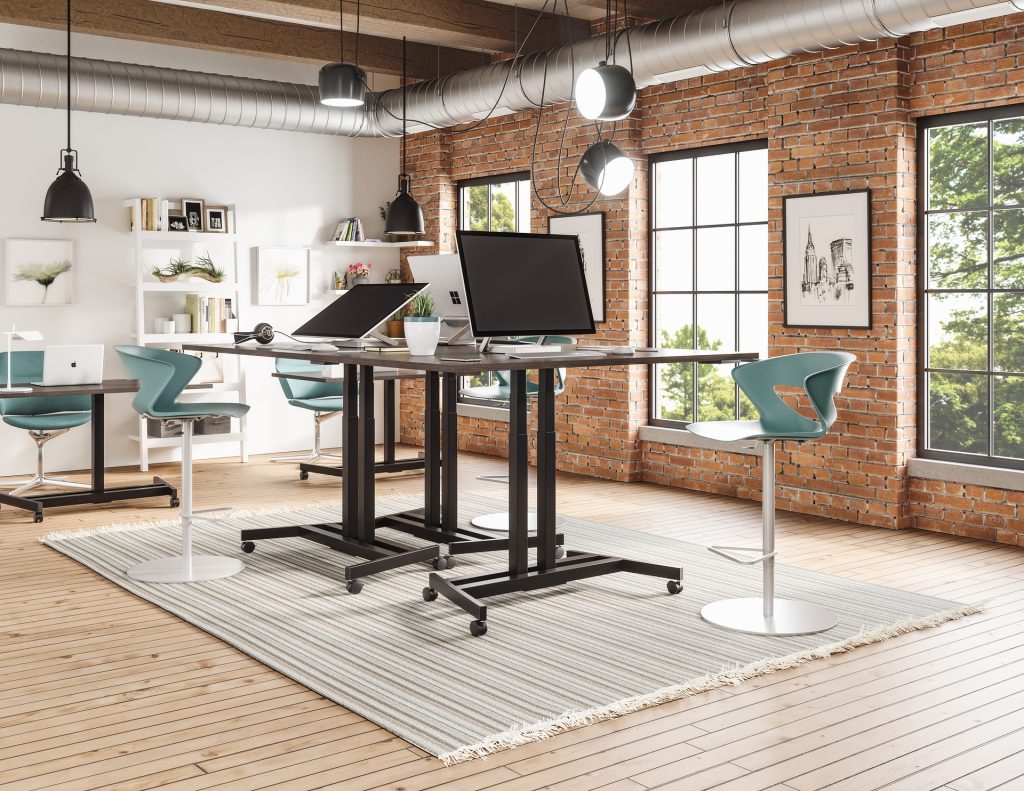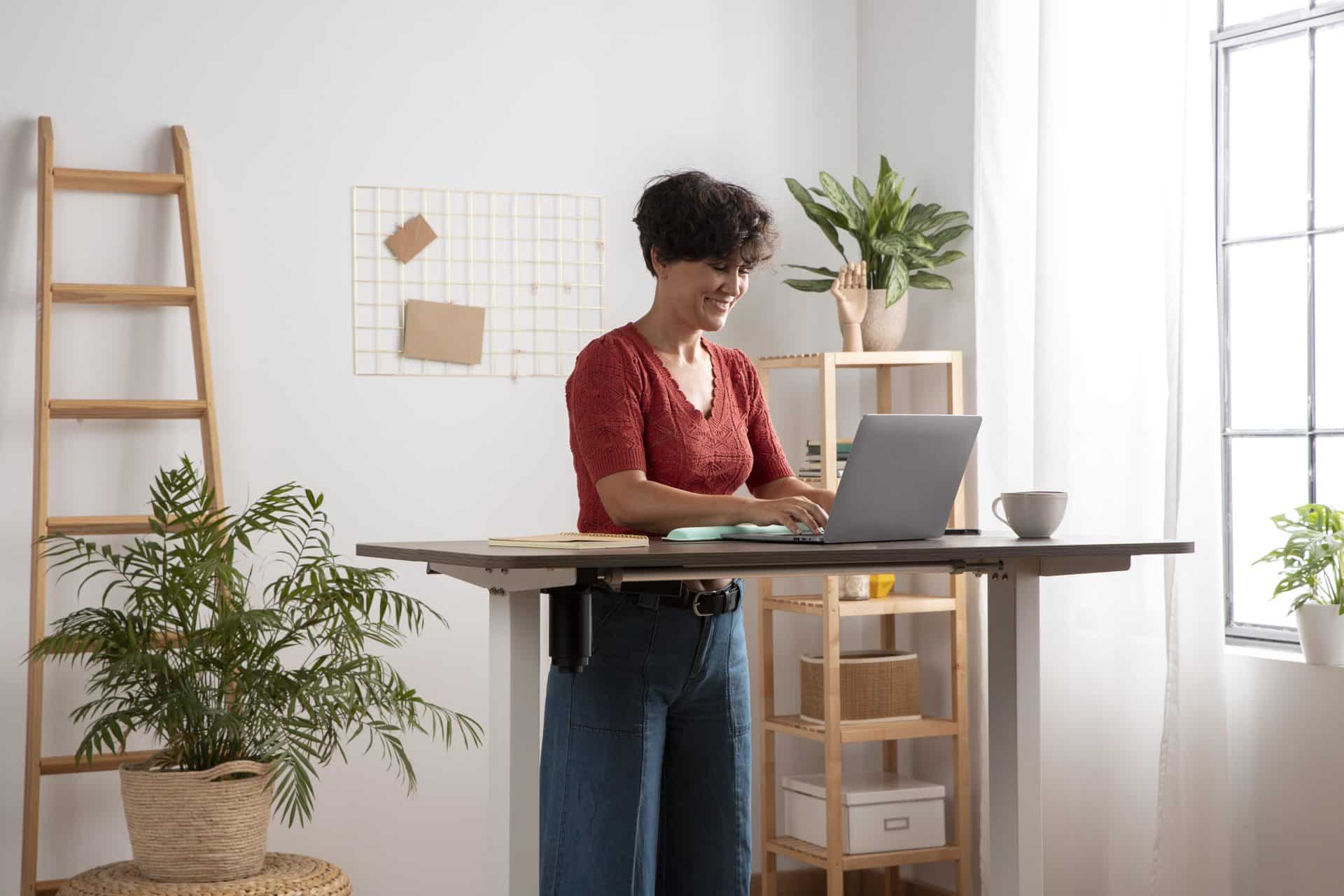If you work in an office, you’ve probably noticed a wave of standing desks emerge in the last few years. Once a wacky new working phenomenon, standing desks are now the fastest growing employee benefit in US workplaces. A widely heralded solution to offset the risks of prolonged sitting and reduce back pain. In the 12 months after the pandemic started, over 20% more people searched for standing desks online in the UK compared to the previous year.
Standing desks come in all shapes and sizes, at a variety of price points. High-end options such as the FlexiSpot E8 typically cost in the region of £400 to £600, with fancy functionality to remember specific desk heights and even prevent collisions. The more budget-friendly sit-stand converters, such as the models by Ergomaker, have also become a wildly popular option for office and home workers alike. During the pandemic, many home workers even created their own DIY standing desks using ironing boards and chests of drawers!

Why are standing desks so popular?
Around 82% of all workers spend the majority of their working day seated. For the average desk worker, this is often 9 hours or more. Sitting for prolonged periods significantly increases your risk of developing MSK issues such as back pain – working at a standing desk can break this harmful cycle. With MSK issues costing the global economy an estimated $1.69 trillion per year, it’s no wonder that standing desks are still growing in popularity.
So, standing desks are beneficial for desk workers in a number of ways. They help to:
- Lower the risk of developing MSK issues, particularly lower back pain
- Improve circulation and blood flow
- Reduce fatigue and boost energy levels
- Improve productivity
Standing desks are an ergonomic furniture staple. Paying attention to ergonomics will help you create a safer, healthier, more comfortable workplace for you and your team.

How to use a standing desk correctly
If you use a standing desk, it’s important to alternate between sitting and standing regularly. Standing all day has its own health risks and can predispose you to circulation problems in your lower limbs, fatigue and reduced productivity. It’s all about balance!
We recommend the following guidelines for a safe and healthy standing desk experience:
- 15 to 30 minutes standing time per hour
- Don’t spend more than 50% of your working day standing
- Monitor or screen should be positioned at eye level
- Table height should be at or slightly below your elbows
- Elbows should rest at 90 degrees on the desk
What if I can’t get my hands on a standing desk?
No standing desk? No problem! Taking regular standing breaks can provide the same health benefits as an actual standing desk. As long as you’re getting up from your workstation for around 5 minutes every hour, you’ll still reap all the rewards discussed earlier.
Vitrue VIDA has many features to help you and your team get the benefits of a standing desk without actually purchasing one:
- Personalised wellbeing recommendations – VIDA offers tailored suggestions to help you incorporate more breaks into your daily routine, taking your working habits into account.
- Pain Coach – One of the best things you can do in your breaks is short bursts of exercise! VIDA Pain Coach is a personalised pain management programme with tailored exercises to help you and your team keep work-related pain at bay.
- Analytics – VIDA analytics gives you a window into your team’s workplace setups, habits, pain levels and ergonomic needs. If you do have some budget for ergonomic equipment, it can help you identify who may benefit from a standing desk the most i.e. the team members with severe back pain or a poor workplace setup.
Are standing desks worth the hype then? Yes, as they can help to curb the ill-effects of a sedentary lifestyle and bring about many other benefits if used correctly. But they are certainly not the only option and there are other hugely beneficial tools you can use to get the same results – Vitrue VIDA is one of them.
For more information on how VIDA can help boost wellbeing in your team, get in touch with us at sales@vitruehealth.com or try out VIDA yourself for free!





